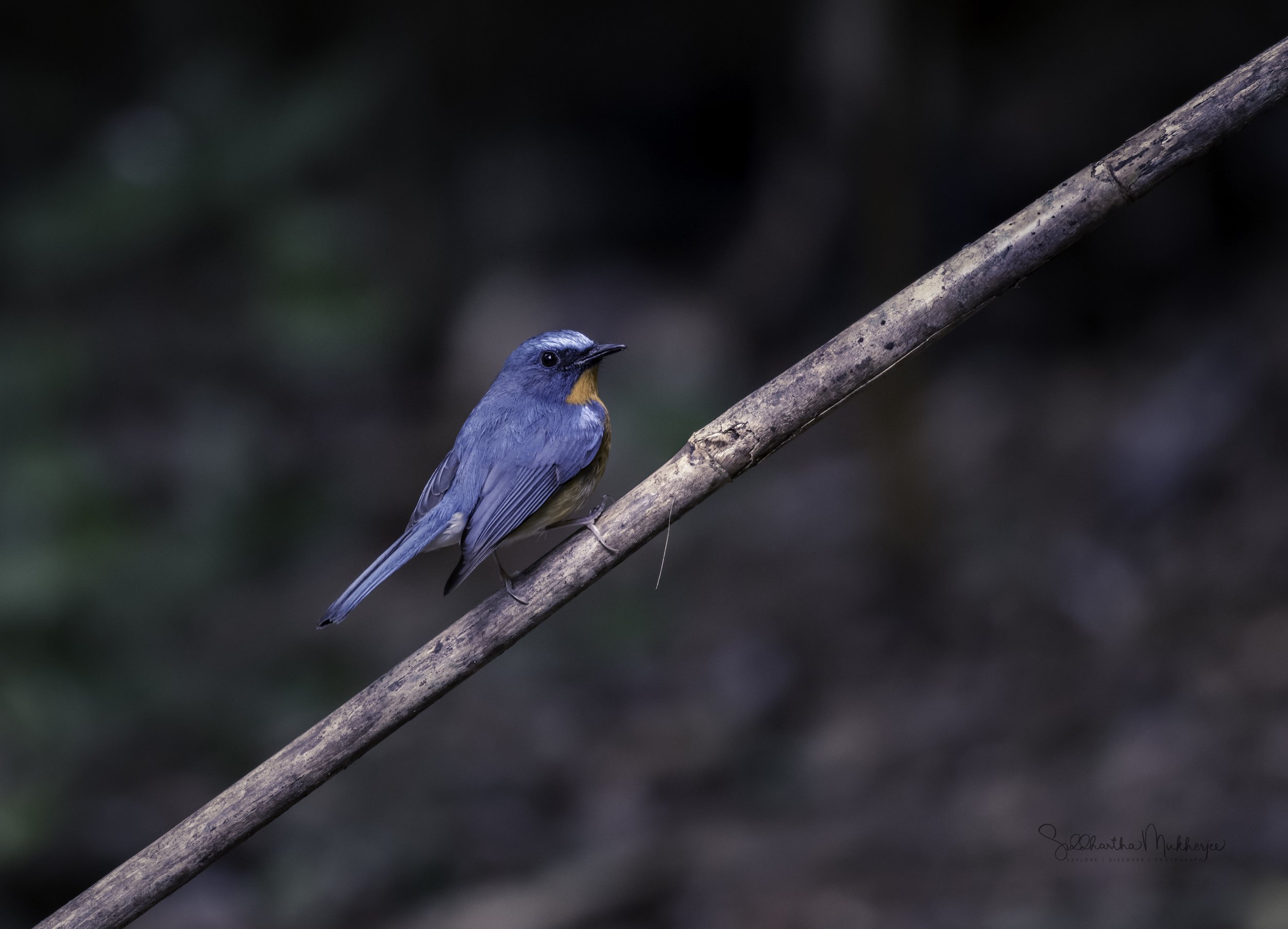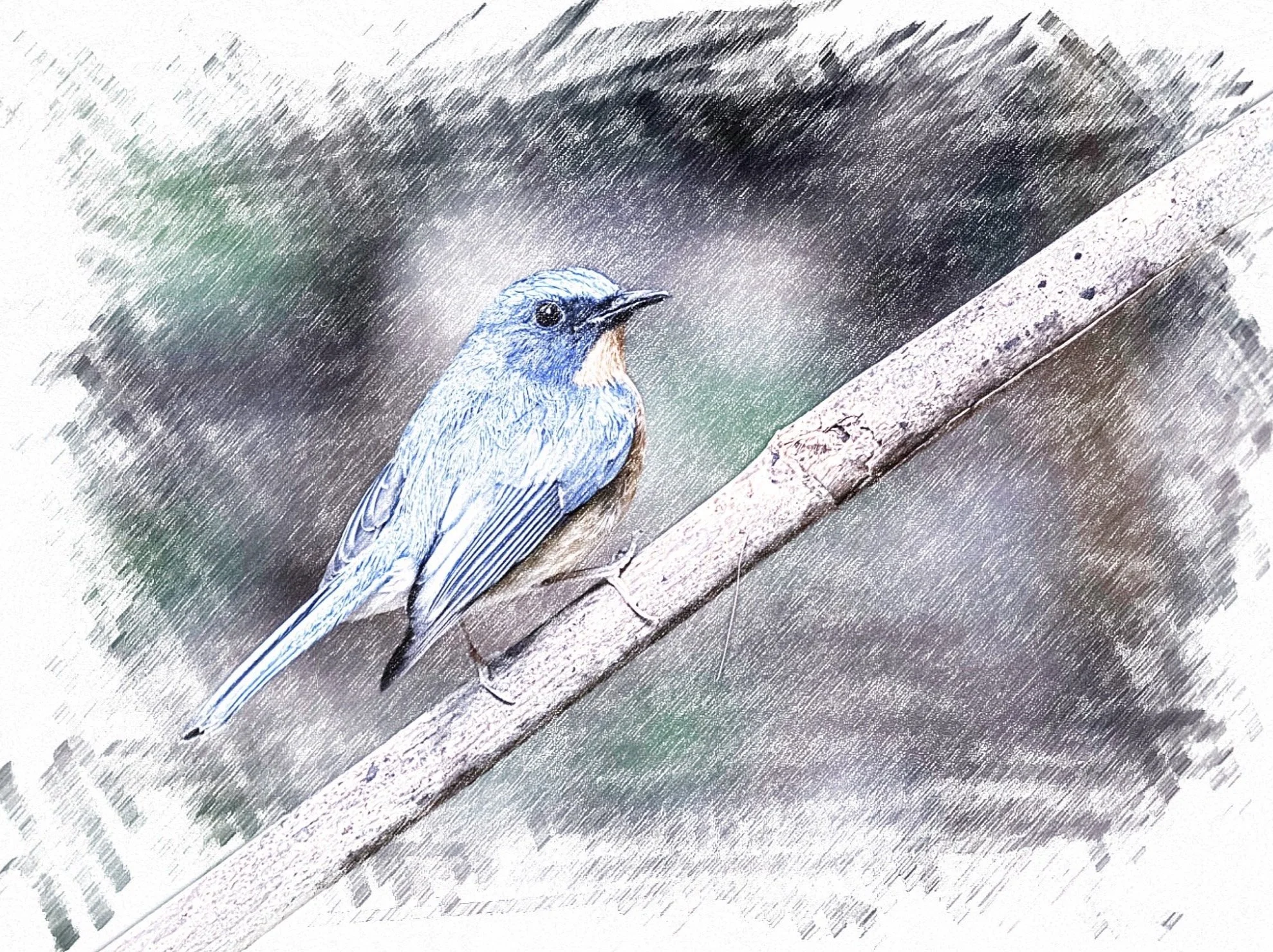Hill-blue Flycatcher
Cyornis whitei
Doi Inthanon, Chiang Mai, Thailand
From the beautiful grasslands of Telangana we now head into the Dois of Northern Thailand specifically to Doi Inthanon in search of the Hill-blue flycatcher. Doi Inthanon is Thailand’s highest mountain and a site of unique biological interest supporting a fascinating variety of vegetation and a higher bird species total than any other protected area. Of the total of 382 species of birds so far known from Doi Inthanon, at least 266 species are residents or were formerly residents on the mountain. To read about some of the birds from these Dois click the links below:
For a list of birds recorded at these Dois click here and for all the other species recorded in the country click here: Birds of Thailand.
About 685 kilometers to the north of Bangkok lies the former seat of the ancient Lanna Kingdom & is considered one of the most scenic provinces in the country given its mountain ranges, valleys, flora and fauna. A land of misty mountains and colourful hill tribes, a playground for seasoned travellers, and a delight for adventurers. Despite its relatively small size and blissful calm, Chiang Mai truly has it all, a city that is still firmly Thai in its atmosphere and attitude. It is the second-largest changwat (province) of Thailand. Bordered by Chiang Rai to the northeast, Lampang and Lamphun to the south, Tak to the southwest, Mae Hong Son to the west and the Shan State of Myanmar to the north. Located in a verdant valley on the banks of the Ping River, Chiang Mai was founded in 1296 as the capital of the ancient Lanna Kingdom. Today it is a place where past and the present seamlessly merge with modern buildings standing side by side with venerable temples. Of all the places I have visited in Thailand, Chiang Mai with its forests and mountains and the historic city of Ayutthaya are by far my favourites.
Hill-blue Flycatcher (Male)
Hill-blue Flycatcher (Female)
On this trip, during my time on the mountain, this was the only time I saw the flycatcher and only the female came out. I had the opportunity to take some photos and this short video of her flying down to the stream below us foraging from a brilliantly disguised hide on the bank. What I found very interesting at the time, and since then verified with almost all other Passerine species I’ve observed, is that the bird came and perched at almost the exact same spot on the branch each time it flew. The short video I recorded illustrates this. I am sure there must be a reason for this behaviour but I haven’t found any good explanation for it. If someone who knows why can help explain it will be awesome.
I did see and record the male but that was much later and further up the mountain.
The word Chiang itself is from North Thai, or Lanna, meaning town or city and Mai means new making Chiang Mai the New City as it was founded later than Chiang Rai, the earlier capital of King Meng Rai. The districts in the province are called amphoe, and sub-districts are called tambon. Another twist is the use of Nakhon (or Nakorn or Nakhorn), derived from the Sanskrit word Nagara, also means city, though strictly speaking it refers to a capital city such as Nakorn Sri Ayutthaya (more on Ayutthaya later). Indeed to emphasise its former status you may sometimes see Chiang Mai referred to as Nakhon Ping. Other common names of geographical features include mae (river) and doi which is north Thai for mountain - for example Doi Inthanon and Mae Ping.
The four Dois we spent our time on were Doi Inthanon, Doi Ang Khang, Doi Luang and Doi SanJu. Read about the birds from these mountains.
Doi Inthanon is Thailand’s highest mountain and a site of unique biological interest supporting a fascinating variety of vegetation and a higher bird species total than any other protected area. Of the total of 382 species of birds so far known from Doi Inthanon, at least 266 species are residents or were formerly residents on the mountain. Doi Inthanon is of particular conservation importance for those species which inhabit the moist hill evergreen forests of the upper slopes. Some, such as the Chestnut-tailed Minla and White-browed Shortwing, which are around the summit, occur in Thailand only on those few higher mountain summits which have considerable areas of hill evergreen forest above 1800 m. Doi Inthanon contains the only significant protected populations of such species in Thailand. The Ashy-throated Leaf-Warbler is found no where else in Thailand while an endemic race of the Green-tailed Sunbird (Aethopyga nipalensis angkanensis) is also completely confined to the summit. The Wachirathan Waterfall is one of the best sites for observing birds of fast-flowing streams. The Plumbeous Redstart and the River Chat often perch on boulders in mid-stream. The Slaty-backed Forktail can also sometimes be seen. Among the many scarce arboreal birds to look out for are the Long-tailed Broadbill, Brown-throated Treecreeper, Green Cochoa, Purple Cochoa and Black – tailed Crake.
We didn’t have the good fortune to see all the species on all the mountains, that would have been impossible, but we did rack up quite a number of species - about 95 of them. The gallery today is of the equally shy and reclusive Rufous-throated Partridge.
For a print of the beautiful birds from the Dois click on the button below to read my process and order a limited edition canvas.
‡‡‡‡‡
I would like to give my heartfelt thanks to our wonderful guide and host - Atiwich Kwaechum Ball (inset). Affectionately called Ball, he took phenomenal care and ensured that we got the species we targeted. Another crucial aspect he handled with aplomb was the food. Chiang Mai’s dining scene is outstanding with excellent choices, ranging from first-class fine-dining restaurants with international menus to little local joints specialising in the area’s unique and tasty cuisine. The food is especially remarkable, with an emphasis on small shared dishes. With Ball showing the way we had THE best culinary experience - ever - considering our penchant for staying away from civilisation, more or less, on these trips.
‡‡‡‡‡
Hill-blue Flycatcher
The Hill-blue Flycatcher is a rather unobtrusive, colourful insectivorous inhabitant of shady undergrowth in evergreen forest of hilly regions. It exhibits marked sexual dichromaticism in plumage, with the males being a deep blue on the upper parts contrasting with a bright rufous-orange throat and breast. The female, like the male, has the blue upper parts replaced by a grayish brown, with a rufous tail.
It is typically common across much of the mainland of south-eastern Asia, but usually less uncommon in adjacent parts of north-eastern India and southern China. Despite the conspicuous male plumage, it is usually detected by its harsh "tac" call or variable, rich, melodious warbling whistles. It generally sits still for long periods, waiting to dart out and capture passing insects.
Until recently, it had been treated as conspecific with the more range-restricted Javan Blue Flycatcher (Cyornis banyumas) and Dayak Blue Flycatcher (Cyornis montanus) under a broader Cyornis banyumas before molecular phylogenetic studies found them to be distinct. Other species have also been considered conspecific Hill Blue Flycatcher in the past, including the Large Blue Flycatcher (Cyornis magnirostris) and the Palawan Blue Flycatcher (Cyornis lemprieri).
The female generally poses a higher confusion risk in identification with other Cyornis species that shares the combination of rufescent-brown tail and orange breast, including the Hainan Blue Flycatcher (Cyornis hainanus), Pale-chinned Flycatcher (Cyornis poliogenys), Blue-throated Flycatcher (Cyornis rebeculoides), Chinese Blue Flycatcher (Cyornis glaucicomans), and the Large Blue Flycatcher (Cyornis magnirostris). The Hill Blue Flycatcher has more strongly rufous tail, richer rufous-orange throat and breast than those species. Hainan Blue Flycatcher can also be ruled out by its “tic”, rather than “tac”, call.
Sexual dichromatism aligns with the majority of Cyornis species. The males have deep blue upper parts with brighter, a brilliant electric blue band on forehead and lesser wing-coverts near the bend of wing. Lores and ear-coverts are darker, indigo-blue, than the rest of the head and upper parts. The rump and upper tail a slightly brighter blue than the mantle. The throat is a bright rufous orange and the breast a slightly deeper rufous orange, grading into paler rufous lower breast and typically white under tail-coverts.
Individual variation is most pronounced in the tone of the upper parts coloration in the females, ranging from the typical rufous-brown to occasionally bluish-gray, and the extent of rufous-orange on underparts. Populations vary slightly with geography, with birds in the southern and south-eastern parts of its range being richer in coloration in general. The two very restricted-range subspecies largely confined to eastern Thailand, C. w. lekakhuni and C. w. deignani, appear to be slightly heavier-billed and have more extensive rufous on underparts.
Four subspecies are recognized as follows:
C. w. whitei (Harington, 1908): Occurs in north-eastern India, through Myanmar and southern China, south to northern, western, and north-eastern Thailand, northern Laos and Vietnam.
C. w. lekhakuni (Deignan, 1956): Slightly large-billed than C. w. whitei but male has deeper blue upperparts, brighter blue frontal band and lesser wing-coverts. Both sexes have more extensive orange on underparts than C. w. whitei. Female is said to have gray wash on crown. Endemic to Khao Yai National Park and adjacent hills in the eastern plateau of Thailand.
C. w. deignani (Meyer de Schauensee, 1939): Closely resembles C. w. lekhakuni but orange on belly slightly less extensive and male has duller blue frontal band. Confined to mountains of south-eastern Thailand and adjacent Cambodia.
C. w. coerulifrons (Baker, ECS, 1918): Similar to C. w. whitei but overall coloration noticeably richer and deeper. Rufous on breast may contrast with the slightly paler throat. Upperparts coloration in female varies from rufous brown to gray with bluish uppertail-coverts. Confined to southern Tenasserim, extreme southern Myanmar and Thai-Malay Peninsula.
The Hill-blue Flycatcher occurs in eastern Himalayas including Nepal, north-eastern India, through southern China in Sichuan and Guizhou, south to Myanmar, Laos, northern and central Vietnam, south-western Cambodia, Thailand, to mountainous areas in central Peninsular Malaysia
Categorized as globally Least Concern. In Thai-Malay Peninsula, Wells considered it Least Concern, bordering on Near-threatened as it occurs mainly in the forested mountainous regions where habitats are relatively secure. Much of the forested habitats inhabited by Hill Blue Flycatcher in north-eastern India are not protected and largescale deforestation has been documented to take place, particularly northern Cachar (Dima Hasao) and the Lohit and Lower Dibang Valley Districts. It has been recorded on a survey of bird trade in Hong Kong during 1965–1980. Similar taxa such as the Javan Blue Flycatcher (C. banyumas), formerly thought to be specific, has been declining through excessive trapping for bird trade. t is listed as a protected species in Thailand and Malaysia under Wildlife Preservation and Protection Act, B.E. 2535 (1992) and the Wildlife Conservation Act 2010 respectively.
It was a fun time with this lovely flycatcher because we were in a brilliantly disguised hide on the banks of the stream and the bird, female in this case, came in quite close.
‡‡‡‡‡
First some photos of the male Hill-blue Flycatcher which were taken at a different location slightly further up the mountain and quite a bit away from the stream where I first documented the female.
Now for the female which was far more accommodating than the male. She came out near the stream while we were hidden along the banks and spent some time flying around in the general area foraging. The male and female were photographed on different days but in general the areas were very moist, hot and humid.
Related Posts



























